| Umělec magazine 2011/2 >> Suburban Punk | List of all editions. | ||||||||||||
|
|||||||||||||
Suburban PunkUmělec magazine 2011/201.02.2011 Michael Bracewell | music | en cs de |
|||||||||||||
|
“and the Serpentine will look just the same
and the gulls be as neat on the pond and the sunken garden unchanged and God knows what else is left of our London my London, your London” Ezra Pound, from Canto LXXX The house was semi-detached, with three bedrooms, a pleasant, cottage style garden and a grey wooden fence overhung at one end by a lilac tree. Built of Dorking brick in 1922—the year that “The Waste Land” was published—it stood on a road of similar houses, deep into London’s furthest suburbia. Like many of its neighbours, the house had received enemy fire during World War Two, in the form of incendiary bullets; across the bay of the French windows you could still see a neat, diagonal row of scorch-marks in the parquet flooring. In time they had become as much a feature of the room as the inherited piano stool, the oval, gilt framed mirror, and the crystal cockerel. This was London’s southern commuter belt; a landscape created in the 1920s around the rural gentility of Edwardian estates, common fields and Victorian cottages. A land, once noted by E.M. Forster, “of amenities, where success was indistinguishable from failure”. But that seems harsh. By the time this part of my story opens, during the middle years of the 1970s, the house and its suburban road - mellowed by fifty years of soft April evenings and amber autumn Sundays - still appeared a place of unbroken respectability: of order and routine, held fast by codes so rigid that they barely needed a name. An outpost of “The Waste Land”? Perhaps; but only in those threadbare places where an old, underlying sadness showed through the neatness and modest prosperity; more of a desperate tiredness, in fact - Hugh Kenner writes of Eliot: “.... Mrs. Eliot reported to Pound that her husband had done no work of the kind that augments vortices, not for weeks. He returned daily from the bank and fell into a leaden slumber until bedtime.” In the 1930s, in a comfortable villa just ten minutes walk from the Dorking brick semi, a young man called Denis was seen to preen himself. He was aloof, unspeakably contrary, and, for much of the time, obnoxious. The same young man took to wearing make-up in the streets; when asked what he intended to do with his life, he answered, “breathe.” He made friends with a crippled girl who later became a nun. In damp suburban parks they took the air, one hobbling, the other mincing—in his own words, “as though his legs were bound at the knee.” In the late spring of 1977, in the bedroom at the front of the semi, a boy of eighteen was reading a book called The Naked Civil Servant, which had just been published by Fontana. This was the first volume of Denis Pratt’s autobiography, written when he had “dyed” his name, as he said, and called himself Quentin Crisp. Although Crisp described himself as “an effeminate and self-evident homosexual,” the book was about being queer in a much broader sense: punks, like Crisp, could lay claim to being what the latter termed (as a self portrait): “I am an auto-fact - self created.” On a small stereophonic record player in one corner, to a jagged little drum line, a football terrace voice leered out, “I want to be a field day for the Sundays/ so they can fuck up my life.” The boy’s experience of punk would be that of not being in the right place at the right time, but on the edges—a witness to the shock waves of cultural anarchy, but in a twilit hinterland, as obscure and melancholy as a library car park on a winter’s afternoon. And he would be determined to make any journey—suffer any amount of abuse—in order to try and track down some glittering, elemental moment of a new kind of glamour, refined, it seemed, from the wearing of black and red, and that same jagged little drum line. On the outside, but yearning for the centre across nine miles of residential housing, dual carriageways, commuter lines, recreation grounds and bitter, mean, parades of shops, he planned to live the movement more intensely: his longing became the acid bath that stripped away apathy and kept a keen edge on his consciousness—too alert, almost, to what would seem like beginnings of a fantastical spring. And it was at the edges of things that strangeness and intensity seem to roam. His bedroom was both dressing room and theatre; when he got ready to go out, the lapels of his archaic suit—a spoil of some jumble sale in the flint walled Anglican church—were ripped and burned, safety-pinned up one side; his faded t-shirt bore the badly printed face of a serial killer. And the boy’s hair—well, his hair looked as though it had been cut with the bread knife and then dyed with the dregs of school ink; his lower eyelids were crudely lined with black pencil. Crisp had written: As my appearance progressed from the effeminate to the bizarre, the reaction of strangers passed from startled contempt to outraged hatred. They began to take action. If I was compelled to stand still in the street in order to wait for a bus or on the platform of an Underground station, people would turn without a word and slap my face. If I was wearing sandals, passers-by took care to stamp on my toes; and once a crowd had started to follow me, it grew and grew until no traffic could pass down the road.... The years immediately preceding the moment when our boy had heard “Roadrunner” by The Modern Lovers in a friend’s bedroom, now seemed far-off and somnambulant—curiously pastoral in tone: a time which was at once as soft as petals, yet flicked with little dry cat licks of anticipation. Then, slowly, drifting as though to the pull of some magnetic north in the zeitgeist, various influences had seemed to hint at the constellation of a new direction. The middle years of the 1970s had seemed to the boy both lulling and wakening - a perfumed suburban doze; but he had become aware that he was joining in with a covert, intoxicating celebration of artifice, the ceremonies of which might seem all the more intense for being experienced, not in the bohemian demi-monde of Ladbroke Grove or Chelsea - where otherness was the fashion - but to the smell of damp asphalt, privet and rain, out there in deepest suburbia. Now it seemed to him that if punk—the recently agreed label for this vivid new sense of aggressive modernity—was a coming together of disaffected outsiders, then he was even outside the outsiders, a man who fell to Earth, forever the alien. W.H. Auden wrote, in his “Musee des Beaux Arts”: “...must have seen something amazing, a boy falling out of the sky” (The line was repeated on the first page of Walter Tevis’s novel—filmed starring Bowie— ‘The Man Who Fell To Earth’.) And that’s how our boy liked to think of himself. Punk had been the ignition of a volatile mix of chemicals, the brewing of which, it turned out, had been in hand for some time. For instance: one Tuesday afternoon in the early winter of 1975, with the cold, fallen-leaf damp of the park on his pullover, the boy carried home Joris-Karl Huysmans’ novella “Against Nature” from the varnish-scented local library. It was the old Penguin paperback edition, with Baldini’s dove blue portrait of the etiolated, satanic-looking Compte de Montesquiou on the cover. The aesthetic experiments of Huysmans’ decadent count, Des Esseints, had seemed to sit well with the boy’s favourite records: David Bowie’s ‘Diamond Dogs’ - “Just another future song, lonely little kitsch...”; and at late afternoon, when the stretched oblong of amber streetlight had fallen on a carefully positioned poster depicting Henry Wallis’s painting, “The Death of Chatterton,” the haunting, mournful title track of Roxy Music’s “For Your Pleasure” would follow, with Bryan Ferry’s oddly robotic and contorted vocal sounding like the pronouncements of a drugged matinee idol; then the shimmering surface sound of Fripp & Eno’s mesmeric instrumental “Evening Star.” Words and music had all seemed to speak of the end of eras—the end of history? Modernity itself reaching critical mass? Meanwhile, at 430 Kings Rd. Chelsea, they’d been thinking of calling a shop “Modernity Killed Every Night.” But these strange soundtracks to a futuristic landscape had become—as Eno himself would later remark, “new, imaginary worlds”—while outside the silence of the crescents and cul-de-sacs, the warm smell of wood smoke in autumn, had seemed to heighten the potency of the music. It was all against nature; and Des Esseints had chosen to live—where? Out in the suburbs of Paris, away from the wearying sophistry of fashionable society. Of course, the boy longed for London, the box of delights. And as father had commuted up to town, so suburban punks found their way to the station. On the more remote lines, this would be a risky business even in the late 1970s. Platforms and subways were the boy’s first punk landscape—broken windows in the waiting room, stale cigarette smoke, the humming of wires as the train approached. These journeys between the infantile security of his semi-detached home and the volatile glamour of the city felt like commuting between Innocence and Experience. In the months just prior to punk he had found his way to the Roundhouse, for example, to see the Lindsay Kemp troupe perform their mimed celebration of the life of Jean Genet, “Flowers.” That had been an epic journey in more than one sense, from the southern suburbs to beyond Camden, to what seemed like the entrance to a catacomb, with sweating walls and men wearing black lipstick. The old venue—used back in the Sixties for freak-outs like the ‘Dialectics of Liberation’ all-nighter, when they claimed the CIA spiked the sangria with LSD—had seemed like some profane church. For “Flowers” they were burning clumps of patchouli-scented incense. The performance was all mirrored coffin lids, glitter, blood, and white bodies. In fact it was the church of David Bowie, to most of the audience. It seemed a congregation of street aesthetes, absorbed in a style which came across as nostalgia for archaic visions of the future—the ambiguous conformity of Kraftwerk, for instance: young men from London in the middle 1970s, dressed like an idea of Berlin bank clerks from the 1930s, “die Mensch-Maschine.” Peter York, in an essay written for ‘Harpers & Queen’ in 1976, would identify these aesthetes as ‘Them.’ Punk would expand the boy’s discovery of London: the two phenomena would be entwined, would seem to invent one another, become infused with each other’s countenance and energy. For years to come, his memory of London would seem like the Bildungsroman of punk rock: that nineteenth century school of naturalistic fiction in which the provincial outsider attempts to come to grips with the social geography and glamour of the big city. You felt your way through this landscape, learning its contours—partly as a consequence of taste and instinct, and partly by following the trail of a code. It was a mutual recognition of the code that had formed the little gang our suburban boy sometimes went around with. Throughout punk’s first brief springtime (in retrospect it felt like a decade, in reality it was barely a year), it seemed as though every suburb, town and small city created its own version of Andy Warhol’s ‘superstars’ - a collection of hedonists, misfits, interested observers and slaves to the notion of glamour who collectively seemed to illustrate John Waters’ definition of Camp: “the tragically ludicrous and the ludicrously tragic.” Many were distinguished solely by the fact that they would suffer any amount of abuse—fatally, in some cases—in the pursuit of their idea of glamour. And yet their very hopelessness was the essence of their undeniable style. It was all ‘Kevin and camp Sheila’: strong women and fey boys, sitting up at night playing Patti Smith’s “Horses” and “I am a cliché” by X-Ray Spex. Within the punk tribe, you always saw fellow travelers from the suburbs who seemed distinguished by their social awkwardness. At the Nashville or the Marquee or the 100 Club or the Lyceum, even at the Rock Garden, you could spot the loners—timid yet determined, orbital to the louder crowd—dressed up in outfits they’d been scared to wear on the train. Boys with thin faces wearing an old grey raincoat, a beret and a safety-pin through their left earlobe; chunky girls with antique National Health glasses and an old string shopping bag; a black boy wearing green wraparound dark glasses and a dog collar. There they all were, loitering between sets on the dark edges of the crowd, accepting one another through a code. At the old East Croydon station, back in 1977, the spring evening smelled of flowers and petrol. East Croydon, the celebrated Bavarian Anglophile architectural historian Nicklaus Pevsner had decreed, “resembled down-town Johannesburg from the air.” Seen from the flyover at dusk, the modernist office blocks - built during the Space Race in the late 1960s, and named accordingly, ‘Zodiac House’, ‘Apollo House’, ‘Lunar House’, - had a paradoxically Soviet air, their featureless windows, concrete and glass, like punk itself, timelessly modern - the modern as a worn out thoroughfare. “And then we went to Croydon!” as Mott The Hoople once sang. The Greyhound—where Siouxsie and The Banshees were playing, darkly glittering—was separated from these towers by an underpass; evening traffic slid into the tunnel, its dark entrance marked with dirty planks of cold white light. Brake-lights gleamed scarlet in the dusk. The boy walked with his arms folded tightly across his chest, head lowered, hopelessly self-conscious yet oddly defiant. Commuters gaped and laughed; some were openly hostile. The audience for the evening’s performance had considered their appearance; travelling alone, they had each become Quentin Crisp, attempting not to make eye-contact with anyone; en masse they seemed to move like pantomime dames, or walked with their shoulders hunched, as though trying to become invisible: lad types and punk skins spat mouthful’s of lager at one another, while the art school peculiars were graduates from their twin obsessions with Roxy Music’s dandified time-travel (“we wanted to look like members of the Inter-galactic parliament” Brian Eno would later recall) and David Bowie’s glamorous alien on a dying planet—all of this stuck on your eyes. In amongst what Liz Naylor would memorably describe as “the regular knob-heads wearing straight-leg Lee Coopers” this scattering of suburban punk poseurs sourced their look from Weimar Germany, science fiction, Andy Warhol, pornography and the Sex Pistols: bondage trousers that forced you to mince and hobble, skirts made of black PVC, diamante, plastic macs, winkle-picker boots. This was the last time that street fashion was actually dangerous for the wearer: these clothes didn’t just offend the passers-by, they inspired pure hatred. The early punk fashions—this at a time when most men wore brown suits and hair that just clipped their ear-lobes—were beyond audacious: they were so wildly exaggerated, so contemptuous of their social context, that they provoked open hostility as much as incredulity. Today, when all looks are just another look, it is almost impossible to imagine the sheer violence that seemed to scream off the rhetoric of early punk style. Now punk and all its works have become like a new Bloomsbury Group - the personnel and venues, artifacts and anecdotes, are the stuff of university conferences, coffee table survey volumes, stories like this one and museum collections. The era is subject to the most proprietary and jealously guarded notions of witness and authorship. How ironic that Malcolm McLaren—former Croydon art student—had announced, “History is for pissing on”; punk was as historical as Agincourt. And yet its articulation of modernity, its ability to mint ‘newness,’ seems yet to be up-dated; like the collages and typography employed by Dada, the components of punk retain the blank, pristine modernity of machine parts. The names of first wave punk groups expressed this modernity—sharp, functional, with an industrial sheen: Wire, Magazine, Adverts, Buzzcocks, Television. Time passed, like a speed blur. ‘76 flipped into ‘78 and it seemed as though everything had gone industrial and grey. Derek Jarman announced, “It feels as though the Bomb has gone off in our heads, already.” Anxiety was the defining mood—a kind of nervous, insomniac energy that kept so many on so many drugs. This new, portentous sense of the modern, locked in the numerology of the year itself — ‘When Two Sevens Clash’ — was apparent when the suburban reader of Quentin Crisp took the train into central London to see an exhibition by the artists Gilbert & George: their “Dirty Words Pictures, 1977.” The monochromatic and blood red panels of these monolithic photographs showed a London he recognized as the theatre of his auto-faction: a place of timeless modernity, like the towers of East Croydon, yet concentrated, intense, never-ending. (Crisp had said that Style was to know what you were and to do it like mad.) Gilbert & George showed London in 1977 as a montage of office towers, rail-lined city streets, night buses, lowering skies, faces in the crowd, derelicts, broken glass, sun-bursts off the NatWest tower, the blank windows of the offices at London Wall. From the suburbs to the City, for the young punk, was the journey to—that leering football terrace voice, again, sped up—“an evening of fun in the metropolis of your dreams...”; or Bowie’s instrumental soundscapes on “Low,” that Jon Savage called ‘post-everything music’. Here punk London was shown in art: London at a time when rubbish was piled in the streets because of the strikes and corrugated iron seemed to stretch from Chelsea to Convent Garden. He looked at the pictures, with their titles like punk novellas: “Are You Angry Or Are You Boring”, “Cunt Scum”, “Fucked Up”; they looked to him like maps of a secret geography - a London which he would always recognize, for years to come, as his London, as much a consciousness as a place: a territory deep inside himself. This London had its own arcane topography - by 1978, in fact, too much of the network had been exposed to the light of day. (One sunny afternoon along Ladbroke Grove a middle aged freak sold him a second-hand copy of Nico’s “Marble Index,” “Now this is the last time I want this record to see daylight” came the instructions from the tribal elder, whose frail hands trembled in a dust-filled sunbeam.) Having plucked up the courage to go into ‘Sex’, at World’s End, (even the location was suitably named), the suburban boy outsider next went to PX near Floral Street WC2 (gaining access through the low door set into the iron shutters), and then bought himself a silver earring off a blonde woman wearing tank goggles in Detail, on Endell Street. When it opened, he felt that he’d been waiting for that changing room from the 21st century that was Antony Price’s shop Plaza, at the top of the Kings Road, below 20th Century Box and facing Beaufort Market. By now, sometime around 1978, punk had fragmented into an eclectic array of sub-sections, from earnest social realists to futurist aesthetes; Plaza was a minimalistic quartermaster store for the youth modern(e) who urged punk to renew itself from the instant cliché of a two-chord rant; fabric samples and garment samples were fastened to perplex sheets on the racks, and then the human mannequin behind the mirrored counter handed you your chosen items. The changing rooms were totally mirrored, like a voyeur’s dream or the nightmare of the insecure; they looked like the room on the cover of Fripp and Eno’s mesmeric post-everything record, ‘No Pussyfooting’, and that was enough. Price had been deeply involved with Roxy Music’s styling, and he later caught an early post-punk sub-strand by creating clothes like fetishized sci-fi uniforms — girls in military shirts, with purple Lurex and black crepe epaulettes. Pop art clothes for post-Pop people. So soon, the cartoon anarchy of early punk was a wretched fun-fair; the future lay in new audacities, authorized by punk’s pro-active approach to rule-breaking: Public Image Ltd’s ‘Metal Box’ became a new soundtrack for suburban London in the grip of mid-winter—the string synthesiser of the closing track ‘Radio Four’ sounding like the music for punk rock’s final credits to roll. Odd new groups from provincial northern cities had also picked up the challenge of newness. On Sunday nights at the old Lyceum Ballroom on Wellington Street, there would be quadruple bills of these newcomers: Mekons, Gang of Four, The Human League and Stiff Little Fingers; Delta 5, Cabaret Voltaire, Ludus, This Heat. Each brought with them to punk London’s mix of brutalist concrete and Dickensian side streets their own richly atmospheric sense of place: ruined industrial cities in the north, where science and technology were framed by blackened Gothic grandeur. Convent Garden, then, was also mostly derelict; violin menders and esoteric bookshops kept their air of the 1930s, undisturbed by any sense of change. For years the ceremonial entrance to the Empire mansion block opposite the Lyceum had rusted railings drawn across its porch, a withered bouquet laced through its chains. On the benighted, poorly-lit streets of Convent Garden in the late 1970s, the theatrical melodrama of New Romanticism—punk’s major successor—was first identified: dusty and deserted districts of central London—Holborn, Grays Inn Road, Fitzrovia—were co-opted as moodily-lit stage sets for young people dressed as though Lord Byron had tutored with Radcliffe Hall. It is maybe a common experience—for every generation—that their defining period (an enlargement of what Virginia Woolf describes as ‘a moment of being’, when one’s consciousness seems fully engaged in the present) makes a single sensation of memory and geography. Walking through London, in this sense, becomes like walking through the chapters of your autobiography, with sites and routes doing the work of written chapters. The suburbs, meanwhile, seemed to remain largely unchanged. True, London was expanding all the time, and what had seemed in 1960 to be little more than country market towns would seem by 1980 to be fully absorbed into the grey mass of the greater city. Yet something more fundamental had remained—that modest prosperity, rigid code and ancient tiredness, perhaps—which would only begin to fracture and fall away across the following decade. The punk experience of suburbia enabled one still to walk—in post-everything clothes—through a residential and civic landscape which Stevie Smith would have recognized from the late 1940s and Betjeman might have celebrated as the ruins of interwar gentility. In the suburbs in 1976, there were still graveled drives to private tennis courts, and Tudor tea rooms, and leaded windows in the style of Lutyens. It was only towards the building boom of the early 1980s, when whole clusters of little postmodern artisan cottages—called ‘Cheyne Cloisters’ and other such aspirational names—were built on what had once been some Edwardian villa’s back lawn, that it all began to change. In this much, you’d find suburban punks who inhabited the last dusk of the old domestic landscape of the post-war middle classes. Punk never seemed to be the People’s Music, for our boy, but more what Howard Devoto, the man later dubbed ‘the Orson Welles of punk,” would term: “trouble-shooting modern forms of unhappiness.” For those who found their way on to the arcane geography of punk in London, many of the movement’s venues and passes now seem possessed of a somewhat poeticised obscurity: the old Electric Ballroom where Wire taunted an audience largely comprised of drunk skinheads with a three hour piece of performance art; the furthest reaches of the Portobello Road, where you could buy imported bootlegs of records by The Residents, Devo and Pere Ubu; West Kensington Underground station by the old Nashville, a room full of Polaroids in a tall house in Notting Hill Gate, the Notre Dame Hall in Leicester Square... The most indelibly etched of these sites were the ones that you simply had to know how to find—drawn as though by a need from the far-flung bedroom in the Dorking brick semi, charmed by a 7 inch single in a weird sleeve that seemed to promise that this would be the entrance to that secret London of relevance and newness that you felt sure existed, which would change your life forever, but which you had first to track down. And the boy, now late middle-aged, thinks how it can still all bring a tear to this old sheriff’s eye. end.
01.02.2011
Recommended articles
|
|||||||||||||
|
04.02.2020 10:17
Letošní 50. ročník Art Basel přilákal celkem 93 000 návštěvníků a sběratelů z 80 zemí světa. 290 prémiových galerií představilo umělecká díla od počátku 20. století až po současnost. Hlavní sektor přehlídky, tradičně v prvním patře výstavního prostoru, představil 232 předních galerií z celého světa nabízející umění nejvyšší kvality. Veletrh ukázal vzestupný trend prodeje prostřednictvím galerií jak soukromým sbírkám, tak i institucím. Kromě hlavního veletrhu stály za návštěvu i ty přidružené: Volta, Liste a Photo Basel, k tomu doprovodné programy a výstavy v místních institucích, které kvalitou daleko přesahují hranice města tj. Kunsthalle Basel, Kunstmuseum, Tinguely muzeum nebo Fondation Beyeler.
|






























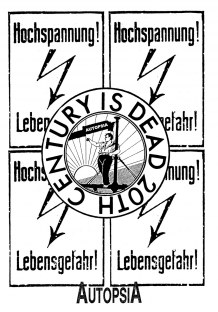




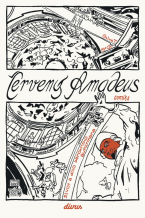
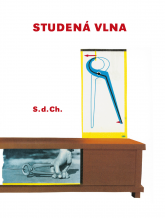
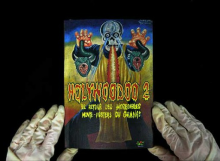
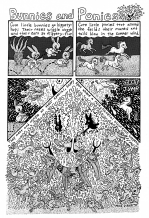


 We Are Rising National Gallery For You! Go to Kyjov by Krásná Lípa no.37.
We Are Rising National Gallery For You! Go to Kyjov by Krásná Lípa no.37.
Comments
There are currently no comments.Add new comment